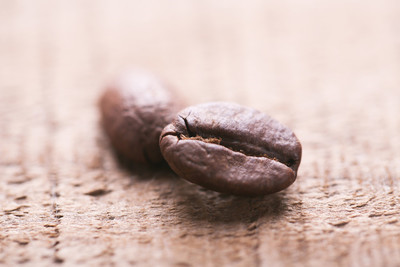碳酸钠和氯化钙 - 氯化钙与碳酸钠的离子方程式
The reaction between sodium carbonate (Na₂CO₃) and calcium chloride (CaCl₂) is a fascinating example of a double displacement reaction, resulting in the formation of sodium chloride (NaCl) and calcium carbonate (CaCO₃). Here's a detailed and organized summary of the reaction and its implications:
Reaction Overview:
1. Reactants and Products:
- Sodium Carbonate (Na₂CO₃): Dissociates into 2 Na⁺ ions and 1 CO₃²⁻ ion.
- Calcium Chloride (CaCl₂): Dissociates into 1 Ca²⁺ ion and 2 Cl⁻ ions.
- Reaction Equation:
[
Na₂CO₃ + CaCl₂ rightarrow 2 NaCl + CaCO₃ downarrow
]
- Products: Sodium chloride remains soluble, while calcium carbonate precipitates out due to its low solubility.
Key Concepts:
- Double Displacement Reaction: The cations (Na⁺ and Ca²⁺) swap anions (Cl⁻ and CO₃²⁻), forming new compounds.
- Solubility Rules: Most carbonates are insoluble except those of group 1 metals, making CaCO₃ precipitate.
- Ksp Principle: Precipitation occurs when the ion product exceeds the solubility product (Ksp) of CaCO₃.
Practical Applications:
- Food Industry: Used in texture maintenance and baking powders.
- Water Softening: Helps remove calcium ions from hard water.
- Industrial Processing: Useful in crystallization and precipitation techniques.
Considerations:
- Excess Reactants: Excess reactants remain unreacted, affecting the amount of precipitate formed.
- Concentration Effects: Higher concentrations can increase reaction rate, but precipitation occurs once the solution is saturated.
- Cost Efficiency: Sodium carbonate is less cost-effective for certain applications compared to alternatives like sodium hydroxide.
Educational Relevance:
- Stoichiometry: Ideal for teaching limiting reactants and yield calculations.
- Acid-Base Context: Highlights the behavior of salts acting as bases or neutrals.
This reaction not only demonstrates fundamental chemical principles but also has significant real-world applications, making it a cornerstone in chemistry education and industrial processes.
碳酸钠和氯化钙离子方程式
化学方程式:Na2CO3+CaCl2====CaCO3↓+2NaCl化学符号不到打 就用中文代替咯——!~拆开得:钠离子+碳酸根离子+钙离子+氯离子=====碳酸钙↓+氯离子+钠离子将未参加反应的钠离子与氯离子约掉得:离子式:碳酸根离子+钙离子=======碳酸钙↓、谢谢采纳!~
碳酸钠和氯化钙反应生成什么 化学方程式
企业回答:顺啬科技有限公司成立于中国经济上海市,专业生产销售非金属矿物制品、化工产品、食品添加剂、生物、能源等各种功能性新材料。与多家材料、能源、化工、生物、矿产企业,研发中心与制造基地相结合,区域覆盖上海、天津、江苏、浙江、四川、广东...
氯化钙为什么能和碳酸钠反应
碳酸钠和氯化钙反应可生成:碳酸钙和氯化钠。其化学方程式: Na₂CO₃+CaCl₂=CaCO₃↓+2NaCl 氯化钙和碳酸钠发生了复分解反应。 复分解反应的条件:产生沉淀或生成水或者生成气体,只要有三个条件的其中一个成立就可以反应...
碳酸钠与氯化钙反应?
氯化钙在水中会电离出钙离子,碳酸钠在水中会电离出碳酸根离子,而碳酸钙是一个沉淀,当溶液中钙离子和碳酸根离子的离子积常数超过其Ksp时,就会产生沉淀,宏观上看,氯化钙就和碳酸钠发生了反应
碳酸钠和氯化钙反应生成什么 化学方程式?
碳酸钠与氯化钙反应 生成caco3沉淀 碳酸钠与澄清石灰水反应 先生成caco3沉淀,然后沉淀消失。因为碳酸钠反应完后,caco3沉淀与过量的澄清石灰水反应生成碳酸氢钙 ca(hco3)2 ,ca(hco3)2溶于水,所以沉淀会消失
氯化钙为什么和碳酸钠反应
碳酸钠和氯化钙反应生成碳酸钙沉淀和氯化钠 ,反应现象是溶液变浑浊。Na2CO3+CaCl2=CaCO3+2NaCl。
碳酸钠和氯化钙的化学方程式
因为反应生成碳酸钙沉淀,两个盐反应若产物有沉淀,水,或者气体, 三者中任何一种生成,那么该反应就能进行。 反应方程式:CaCl2+Na2CO3=CaCO3↓+2NaCl
碳酸钠和氯化钙反应的目的是什么?
碳酸钠和氯化钙在溶液中的化学反应方程式如下: Na2CO3+CaCl2=2NaCl+CaCO3↓
碳酸钠和氯化钙反应吗
碳酸钠和氯化钙反应可生成碳酸钙和氯化钠,其实就是要来制取碳酸钙的,碳酸钙是强碱弱酸盐,而酚酞试液遇碱变红.
碳酸钠和氯化钙反应生成什么
Na2CO3+CaCl2==2NaCl+CaCO3↓ 会反应,因为生成物有碳酸钙白色沉淀
Na2CO3+CaCl2=CaCO3↓+2NaCl 这是个复分解反应




